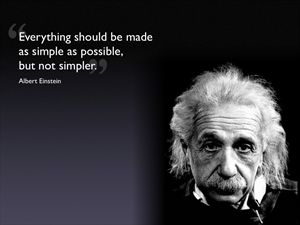Best Practice Supply Chain Is a Glass Pipeline
Better visibility allows supply chain managers to see farther upward and downward into their supply chains. With that vision, best-in-class supply chain managers leverage the benefits of the “glass pipeline” to predict demand and determine where issues in the supply chain can affect utilization of resources, such as labor and transportation.

There are five steps aspiring supply chain managers can follow to gain the vision they need to take control of the variables that can whipsaw their operations. Proper execution of these steps, in order, achieves maximum success.
Step 1: Know Your Current Performance
First, develop “rule of thumb” productivity measures that are applied to inbound and outbound volume data. The simpler the better. Man-hours per Inbound Case (or dollar), or Man-hours per Outbound Case (or Dollar) are two examples. Rough measures that any supervisor can quickly apply are good enough to start.
Step 2: Gain Demand Visibility
Start simple. Develop ways to poll aggregated demand. Best-in-class companies develop forecasts based on store inventory stocking levels and projected future orders. Using the projected demand based on inventory levels, best-in-class managers apply the rule-of-thumb productivity ratios to the projected demand to develop staff planning.
Step 3: Gain Inbound Supply Visibility
Again, start simple and develop ways to project aggregated inbound activity. The simplest is an inbound receiving appointment program, where delivery agents must secure an appointment to deliver. In setting the appointment, the agent provides pallet and case count for the delivery. More advanced programs use Advance Shipment Notices (ASN) data and carrier-supplied EDI data to project inbound activity. Using this data, best-in-class managers apply the inbound productivity ratios to project staffing requirements.
Step 4: Drive to Standard Internally
Best-in-class operations set standards and then drive their operations to perform to or exceed those standards. These are not engineered standards, but throughput-per-unit-of-staff standards. They monitor performance throughout the day, coaching associates to work to expectations. Some best-in-class operations that use team-based incentive programs review performance every hour and selectively dismiss associates who are not working to standard. This leverages the strongest performers, who are motivated because they get more opportunity to obtain a larger slice of the unit productivity bonus because they work more hours. The weaker players are motivated to improve performance in order to earn more hours.
Step 5: Drive to Standard Externally
Best-in-class supply chains monitor and motivate the performance of upstream suppliers. They set clear performance expectations for supplier performance, monitor supplier performance, and take actions when necessary to change the supplier’s behavior. A key component is a robust supplier compliance management system that measures and monitors key events in the supply chain in real time. These systems measure execution performance in granular form, alerting key personnel to failures and supporting resolution processes.
The Hand of Control
Best-in-class performance is a result of steady control of the operation. Managers of all levels of best-in-class supply chains apply these five simple concepts. They use simple expressions of aggregated known performance against projects to plan resources. They monitor current performance and release unneeded or underutilized dynamic capacity. They drive suppliers to meet performance expectations.
Best-in-class supply chain managers keep their hands on the controls, taking full advantage of the power of the glass pipeline.


